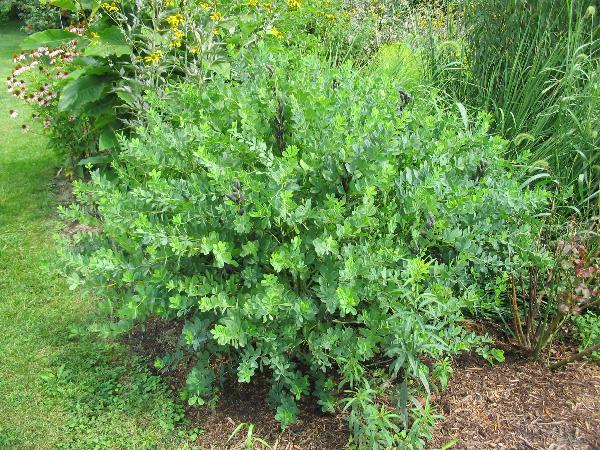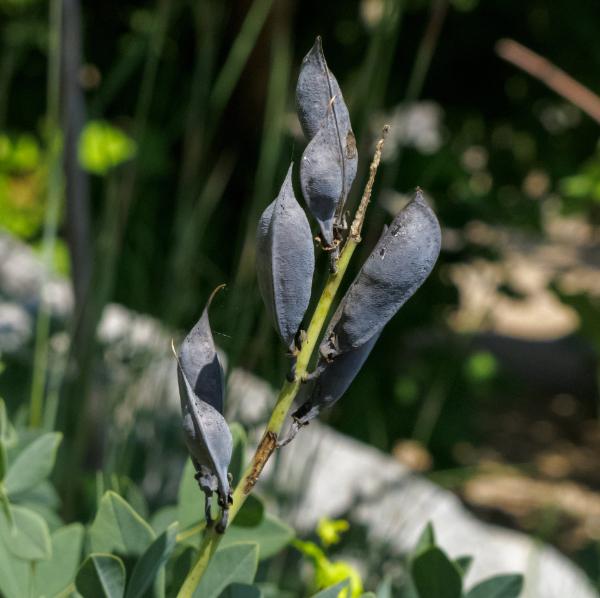About false blue indigo
Baptisia australis
Herbaceous perennial
Maryland Distribution: Mountain and Piedmont regions; status is now rare/threatened
Height: 3’-5’
Flowers: showy blue flowers on 10”-12” long spikes in May-June; insect-pollinated, primarily by bumblebees
Fall color: none; leaves turn black at the first fall freeze
Sun: full sun to partial shade
Soil: sandy-rocky soil; tolerates clay; pH < 6.8
Garden Uses: False blue indigo (Baptisia australis) is native to Maryland but now rare in its natural habitat - woodlands, streambanks, and floodplains of the Piedmont and Mountain regions. In the garden, this herbaceous perennial plant grows into an attractive shrub-like form. The medium blue flowers bloom for about 2-3 weeks in May-June and are followed by pea-like green pods that turn black in the fall. This plant was used by Native Americans for medicinal purposes and to make a blue dye. One of its common names, rattlebush, refers to the rattle sound made by the ornamental dried seed pods. The above-ground growth of false indigo dies with the first hard freeze and can be pruned down to the ground in late fall or early spring.

Cultivated varieties of false blue indigo offer different flower colors and more compact forms that grow to only 2.5’-3’ tall. Examples include: ‘Lemon Meringue’ (yellow), ‘Vanilla Cream’ (ivory), and ‘Cherries Jubilee’ (maroon), to name a few.

Use for: mass plantings, accents, hedges, cut flowers, rain gardens, and pollinator gardens.
Wildlife: False blue indigo supports several species of moths, butterflies, and other insects. It is deer-resistant.